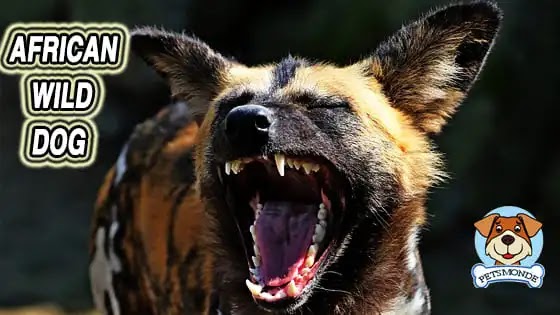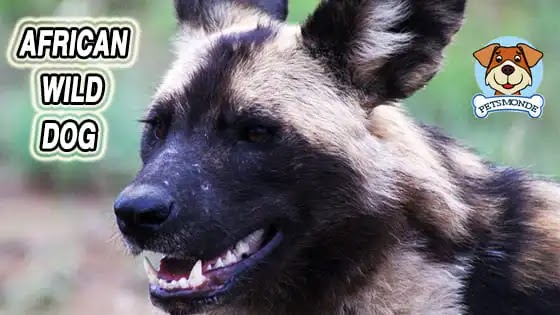The African wild dog and its life
 |
| wild dog |
Wild dogs are social and gather in groups of about ten individuals, but the number of groups can be more than 40 wild dogs, and they are opportunistic predators that hunt medium-sized ruminants such as deer, and in a fast sprint African wild dogs can reach speeds of more than 44 miles per hour, and its danger to humans lies in the fact that it can attack and pounce on humans, as well as sometimes wild dogs kill livestock and important game animals.
The African wild dog and its life
Distribution and habitat
At one time the distribution of African wild dogs (Lycaon pictus) was throughout non-forest and non-desert regions of Africa, but its current distribution is more fragmented. African hunting dogs are now found in Namibia, Botswana, Mozambique, parts of Zimbabwe, Swaziland, and Transvaal, and hunting dogs are found African in grasslands, savannas, and open forests, it is widely distributed across the African plains and is not found in forest areas, and its habitat also includes semi-desert to mountainous regions south of the Sahara desert in Africa.
The appearance
The scientific name of African hunting dogs (Lycaon pictus) reflects the color of its coat. (Lycaon pictus) means colored or patterned wolf, and the fur appears to be coated with brown, red, black, yellow, and white areas, and the color pattern varies in the coat of each animal just like the stripes of zebras. The African wild dog is short with little or no fur, and black skin is sometimes visible where the fur is sparse.
There is usually dark fur on the head and a white tip on the end of its thick tail, and they have large round ears, a thin body, and long, muscular legs with four toes on each foot. The body length of the African wild dog ranges between seventy-five and one hundred and ten centimeters, and the length of the tail ranges between thirty and forty cm and weighs from eighteen to thirty-six kilograms, with males and females tending to be about the same size.
Breeding and young
Each group of African hounds has a dominant breeding pair, and this pair can be recognized by their increased tendency to urine mark, and they are usually the only pair of members of the group that mate and tend to remain monogamous for life, and the average life expectancy is about ten years, Generally, the dominant team prevents subordinates from reproducing, suppressing reproduction between females can often lead to aggressive interactions, and occasionally a subordinate female is allowed to mate and raise the young.
The stage of sexual maturity in the African wild dog is at about 12 to 18 months although they usually do not mate until much later, and the youngest recorded breeding of females was at the age of 22 months, and the gestation period lasts about ten weeks and puppies are usually born between March and July Litter sizes can vary widely from 2 to 20 pups, and smaller litter sizes than animals have been recorded in captivity.
Breeding females give birth to their litter in burrows lined with grass, usually abandoned holes. The pups remain in the den with their mother for three to four weeks. Once the pups are removed from the den, they become the responsibility of the entire herd. They nurse the pups from other females in the pack and their mothers. Weaning is as early as 5 weeks, and the interval between litters is usually 12 to 14 months.
behavioral characteristics
African Hounds are social animals that form groups of up to 40 members, and before the recent decline in the number of African Hounds groups of up to 100 animals were recorded, and the average pack size is currently from 7 to 15 members, and the pack contains an alpha male and an alpha female They are the dominant pair, and there is a separate hierarchy for males and females. On average, there are more males than females in the herd, and females have a much higher migration rate from the birth group than males.
Females usually leave the pack at the age of two and a half years or older to join other groups that do not have adult females, about half of the young males will stay with their father's pack and the rest will leave to form a new group together, and within the pack, these animals have unique interests and social structure, and they cooperate in caring Young people as well as the wounded or sick, and when the dogs return from the kill they feed regurgitated food to the young, wounded and sick as well as any adult who was not able to hunt. Dominant female and subordinate female on breeding rights.
These animals are cooperative hunters as they hunt in packs led by an alpha male. African hunting dogs are primarily diurnal and hunt in the morning and early evening. They will hunt at night if there is a bright moon. The African wild dog uses sight, not smell, to find prey. Once they locate the prey, they start chasing it.
The chase can continue for several kilometers and reach speeds of up to 55 km / h. Dogs chase the prey until they are tired and sometimes they disembowel the prey while it is still running. Once the prey is tired they tear it to pieces. African hunting dogs tolerate scavengers when they kill them Except spotted hyenas, they drive away hyenas and sometimes injure or kill them.
African Hounds are not territorial animals and this is reflected in the lack of territorial urine marking, which is observed in most canids. Occasional urine marking is seen in alpha males and females but not for territorial purposes. Since African Hounds are non-territorial and do not have exclusive ranges their ranges can vary. In size from 200 to 2000 square kilometers.
Diet of the african wild dog
African hounds tend to prey on mammals that are about twice their weight, and sometimes they will kill large animals. They will also take smaller prey individually. Some of the animals they prey on include small antelopes such as impalas and bush duikers, and large animals that are old, sick, or injured such as wildebeest, Wild and zebra.
Sometimes some of the food they get from large kills may be cached, although often they do not return to cached food. For the most part, the African wild dog does not eat plants or insects except for small amounts of grass. That African hounds will never scavenge, no matter how recent the kill is.
African wild dog conservation
The African wild dog (Lycaon pictus) is listed as critically endangered by the International Union for Conservation of Nature-IUCN and the US Endangered Species Act, and habitat loss and diseases spread by domestic animals threaten what remains. African hunting dog groups.

